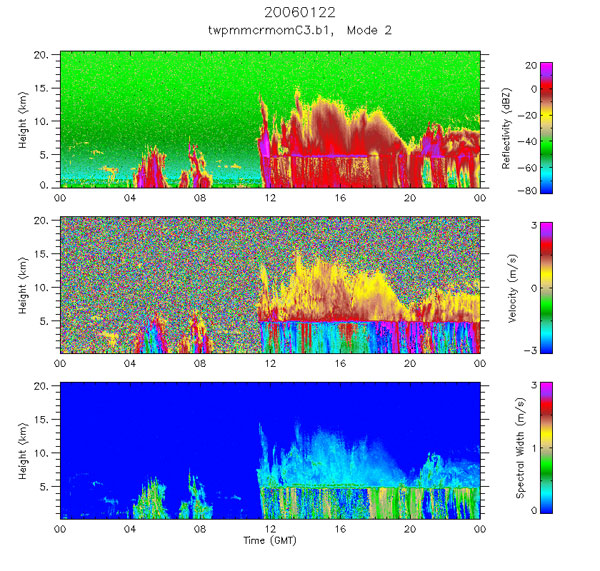This extra tidbit of research responds to Jessica’s feedback about how I overstate the usefulness of the TSI and need to explore how other instruments measure cloud properties.
It is important to consider how other types of instruments measure cloud properties. Cloud radars provide a different perspective of the sky than visual observations from sky cameras or humans. Radars transmit electromagnetic waves and measure the return signal from different hydrometers like cloud particles, rain, ice, and snow. The cloud radar is specially tuned to pick up cloud base and tops, particle size, mass. Unlike other instruments, it picks up thin high clouds well and can provide a fine temporal and spatial resolution (Kollias et al. 2007). Once the return signal has been processed, you can examine at slices of the sky like the image in figure X. Frische et al. devise a method of identifying clouds from the millimeter cloud radar by identifying water droplet size. One assumption in this analysis is that continental stratus clouds have a droplet concentration of 200 drops per cubic centimeter. Instead of visual characteristics defining a cloud, this method uses a threshold of droplet concentration. The cloud radars have shaped our understanding of weather and clouds through methods that would be inaccessible for human ground based observer.
